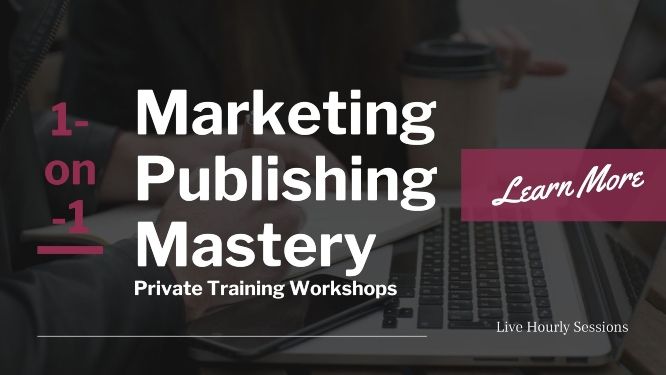SPONSORED
Street banners, radio jingles, and TV commercials have long competed with each other and led people to advertising blindness. That’s what they call the effect when the brain blocks anything that tries to sell something to it.
Marketers have found a loophole in advertising from opinion leaders and bloggers.
But how do you know how effective they are, whose followers are real and how much it costs to advertise on a particular account?
Effectiveness Of Bloggers’ Advertising

Photo by PhotoMIX-Company/Pixabay
No blogger has a perfect audience. Open accounts inevitably get subscribed by just anyone. To understand the audience behind a nice number of subscribers, you need to click on accounts and calculate the percentage of E-commerce shops and bots with strange names.
It is possible to manually check 20-30 profiles in real life, but such analysis would be useless. That is why it is easier to trust the key indicators.
No advertising campaign is effective without tracking KPIs (Key Performance Indicators). These are quantifiable goals that help you to track, analyze, and measure the success of campaigns, and influencer marketing is no exception here.
KPIs When Working With Bloggers/Influencers
Coverage
For the initial evaluation of the effectiveness of an advertising campaign and other b2b marketing strategies with a blogger, you need to measure the extent to which the content reaches the audience, namely, reach – the number of unique users.
But it’s worth bearing in mind that bloggers’ audiences may overlap. For example, if a campaign involves five bloggers with 5,000 subscribers, that doesn’t necessarily mean the reach will be 25,000, as the audiences are very likely not unique.
CPM
CPM (Cost-Per-Thousand Impressions/Cost-Per-Mille) is the price per 1000 impressions. It is measured by dividing the budget spent by the reach figure.
Here you’ll find that the more subscribers a blogger has, the lower the cost per 1,000 impressions. But don’t target bloggers with a million subscribers. It’s likely that a blogger with 10,000 subscribers and a high CPM will bring a campaign more results.
It is necessary to start with how many views the blogger’s posts get on average. So if a blogger who has fewer subscribers gets more views, his post will cost more even with the same CPM.
Engagement (ER)
Engagement rate is another form of simple but useful metric for advertising campaigns with bloggers.
What we assess to measure engagement:
- The number of comments. In the case where a blogger posts more than one advertisement for the same campaign, we calculate the number of comments.
- The number of likes is the total amount of likes for all the posts respectively.
- The number of shares. The number of people who shared the blogger’s post. Shares are a kind of multipliers of the audience, so when creating content you need to focus on whether it makes a user want to “share”.
The sum of likes, shares, and comments divided by the number of views and multiplied by 100% is ER (engagement rate) in percent.
Clicks
To understand how many people clicked on a link and got to the site you need a UTM tag (a snippet of text attached to the end of a URL in order to track a campaign, source, or medium).
For example, in an Instagram post, you know you can’t post links to third-party resources. Instead, it’s better to focus on visits to the brand’s profile.
On Instagram, the blogger will be able to mention the brand in the post, and from there (the profile header) you can get to the website. It’s also possible to link to the site in stories if the blogger has more than 10,000 subscribers in his profile.
Site Traffic
Using UTM tags, you can go deeper into analysis and find out who is visiting your page:
- The number of new users. This metric gives an indication of how quickly your audience expands and how well your advertising campaign encourages them to visit your site.
- The number of sessions. This helps to understand how many times the user went to the page and how much he is interested in you.
- Time on the site. Another important factor to pay attention to. It is believed that the longer the dwell time, the more interesting the site for the visitor, the higher quality and informative content.
Sales
To track the number and amount of sales in an advertising campaign with a blogger, you can use:
- Discount coupons. Use specific promo codes to determine what sales are coming from a particular campaign. This will also provide insight into which audience is more likely to buy your products.
- UTM code. As explained earlier, this code can be attached to a custom URL to track the source, medium, and campaign name. This will allow analytics systems to report where customers came from.
Conclusion
The KPIs we’ve mentioned will help measure the success of a marketing campaign involving bloggers. But we want to point out that the most important indicators are determined by the goals and strategy of the specific campaign.
If the goal is to increase brand awareness, then focus on reach and video views. If the goal is to drive traffic to your site, look at click-through rates; and if the campaign is about sales, your main KPI is conversions.

Evelina Brown
Digital Marketing Specialist
I’m a specialist in digital marketing at the company Booksrun which has extensive experience with books around the world and helps students save money when they buy or sell textbooks.
MARKETING | ADVERTISING | SALES
-
Decrypting Consumer Behaviour: A Practical Journey Through 7 IDEALS
-
Short-Term Goals: The Building Blocks of Effective Marketing Plans
-
Mastering the Art of Search Visibility: A Comprehensive Guide
-
Boosting Conversions in 2023 and Beyond: 7 Types of Content You Should Use
- Zero-Party, First-Party, Second-Party, Third-Party Data
-
The Ultimate Guide to Use an iPad Survey to Grow Your Business
- 6 Clever Ways To Use Instagram For Customer Retention
-
Emotional Marketing Examples | Scientifically Proven To Sway
- How Influencer Marketing Impacts Business Growth
- Identify and reach your target audience - comprehensive guide
- Guerrilla marketing - ultimate weapon if done right
- What is branding in business and how to build a brand
- Direct response marketing - all you need to know
- Does product appearance matter? a story, research, and more
-
23 Solid Reasons That Prove Content Marketing Can Boost Your Business
- Don't push customers to buy
- How to Build a Content Marketing Campaign for your Next Event
- Key Coupon Marketing Strategies To Accelerate Sales
-
The Power Of Video Marketing In A Competitive Business World
-
Marketing Ideas For Photographers – How To Boost Your Portfolio
-
How Artificial Intelligence (AI) Is Changing Social Media Marketing
-
The Future of Email Marketing: How to Optimize for Mobile Devices
- 11 common blogging mistakes that cost you a fortune
- 5 Tips for Creating a Recognizable Online Presence
- Expertise, Authority, and Trust In SEO
-
Why Search Intent Matters For SEO And How To Optimize Your Website
-
Why Well-Established Brands Keep Spending Money On Advertising
-
6 Powerful Suggestions For Writing A Successful Shopify Description
-
5 Effective Ways To Captivate Potential Clients On Social Media
- Ways To Sell Unwanted Gift Cards: Save Time and Money
-
How Can you Make Money with Blogging? – Here are 9 Popular Ways
-
Inbound vs Outbound Marketing Techniques – On the Battlefield
-
New Customer Needs Resulting in a Modern Marketing Definition
-
Low Hanging Fruit Definition – Best Keywords To Get Ranked Sooner
-
How To Promote Your Website Business Offline and Gain Exposure
-
Infographic – How To Advertise Your Business Online For Free
-
Unmasking Black Hat SEO Common Traps, Risks & Ethical Alternatives














0 Comments